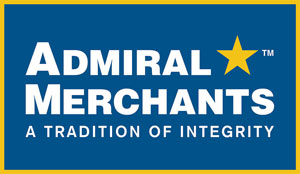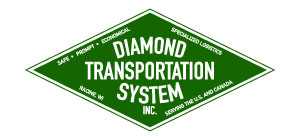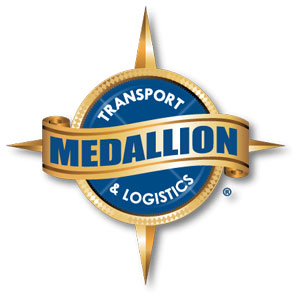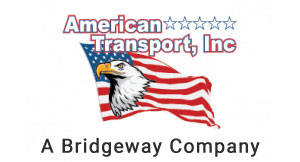Oversize Load Regulations By State

According to the Bureau of Transportation Statistics, “over the road,” trucking handles over 10B tons of cargo each year, with 6% of the total load being oversize loads. The oversized load trucking industry is very complex, from the trucking companies to their drivers, brokers, customers, vendors of safety equipment, and contract escort vehicle operators. With all logistics in place, it’s only reasonable that each state has an independent agency that’s mandated to permit and regulate the transportation of oversize loads.
Oversized or overweight loads may present risks to other road users and structures along the way. Given that these loads often block lanes and cause traffic, specific federal and state regulations are put in place on when and how they can be transported. In addition to taking necessary safety measures, complying with these restrictions ensures that the goods being transported gets to their destination safely, within the set budget, and within the stipulated timeframe. It’s vital to ensure that your cargo meets the set guidelines before getting on the road to avoid delays and other inconveniences.
What is an Oversize Load?
An oversize load is any load that surpasses the standard legal height, width, length, or weight limit for a truck to transport on specified transport infrastructure as defined by each state. Each state in the U.S has varying opinions regarding “legal length” and requirements for oversize freights, so it’s essential to familiarize yourself with specific requirements for each state. In the U.S., an oversize load is a load or a vehicle that is more than 8.5 feet wide or approximately 2.59m, while the maximum height limit is 13 1/2 to 14 1/2 feet. The 8.5 feet width is based on the national network’s standard width (major highway, interstates) travel lane, basically 12 ft. Thus, the maximum legal width is set at 8.5 feet to allow for a 2 feet allowance on both sides of the load.
Any load wider than 8.5 feet, commonly known as an oversize load, requires a state permit to travel on freeways. If the width of a load reaches 14 feet, the driver must adhere to additional restrictions and regulations depending on the specific state. Additional limits can be required for one or two escort/pilot vehicles and limited travel routes and road time. The purpose of the travel vehicles is to warn the driver of any risks or upcoming hazards such as low wires, accidents, bridges, construction sites, etc. It’s essential to note that most states only allow the driver to travel with escort vehicles half an hour before daybreak and half an hour after sunset.
There are also state and federal laws that define weight limits for the transportation of goods. On interstates and major highways, vehicles should not exceed 80,000 pounds. Other weight restrictions are dependent on the number of axles. However, it’s important to note that a load may be overweight but not oversize. It is because bulky cargo may fit perfectly well on a standard transportation truck. Nonetheless, overweight loads may cause significant damage to roadway structures and bridges. Thus, drivers must follow all laws and regulations on oversize and overweight cargo.
What Precautions are Necessary to Transport, an Oversize Load?
If an operator fails to properly secure oversized loads or transport loads that surpass state and federal regulations, it can be very catastrophic. Accidents may occur due to spillages, jackknifing, or serious rollovers that may include other motorists on the road. It is crucial to understand how to minimize any potential risks.
Safety Equipment
Safety equipment is a must-have when hauling oversized loads. They include
- Flags
- Warning signs and flags
- Lights to ensure that other motorists can see the ends of the load
- Sign or banner across the front and at the back
- Amber/red lights for night-time use
- Rotating/flashing light on the hauling vehicle
All safety equipment must be removed when the truck is not in motion.
Escort Vehicles
While most states only require pilot vehicles to accompany the operator if the load is more than 10 feet wide, a few states instruct that all oversize loads be accompanied by escort vehicles. You may require one or two pilot vehicles, depending on the size and type of the load. Also, if the cargo is being transported at night, you may require an escort vehicle in some states. In other states, some extra-wide loads may need the escort of qualified security personnel such as police officers who are paid by the operator for their time.
Permitted Travel Times
Running times differ with each state, as many states restrict the movement of these loads to daytime only. However, some states allow oversize loads not more than 10 feet wide at night on interstate roads. Other states may also restrict movement during holidays, weekends or designate specific load travel times. When moving loads through states, operators must fully comply to set local guidelines, failure to which you may incur heavy penalties.
Individual State Oversize Load Regulations
To understand the exact requirements that your shipment route will need to meet, please consult the following chart for each state’s regulations on oversize loads:
Why do Regulations and Permits Differ?
Regulations and issuance of permits for oversize load transportation vary with each state. One reason for the variation is because the size and weight parameters fluctuate between states, making it difficult to standardize everything. It’s thus important to contact local authorities to confirm compliance with the set guidelines. Familiarize yourself with the current restrictions and state permit contact on the U.S. Department of Transportation Federal Highway Administration(FHWA) website.
Another reason for the variation is that each state has its independent highway regulations, making it responsible for ensuring that all motorists adhere to state and federal transportation laws. Also, most state roads do not meet Federal standards, which may pose challenges for oversize loads. Furthermore, each state constructs its roads using their dimensions and weight limits for different road categories. Permits and regulations for each state are also subject to weather conditions, travel time, cost of permits, pre-trip highway survey, need for escorts, and safety equipment requirements. If the load is traveling through several states, the operator must ensure that they obtain each state’s permits. It can be a cumbersome process since permits may even take weeks to be issued.
The only viable solution is engaging a reputable trucking company, which can save you plenty of time and money. Osage Specialized Transport is a reputable trucking company headquartered in Colorado, Denver, Texas, and McKinney. We are familiar with each state and can quickly obtain whatever they require to get your cargo to your desired destination. We’ve worked with numerous energy companies, heavy-equipment-related firms, specialized construction equipment companies, etc. With over four decades of experience dealing with specialized construction equipment and oversize freight, among others, we’re the best guys for the job.















